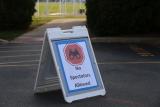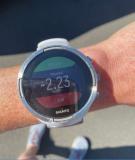Folders |
Running Issues: How to Measure Your RunningPublished by
Training By Miles Versus Minutes, And More By Elizabeth Carey for DyeStat How should you measure your running? You’ve got options. The most popular metrics for quantifying runners’ training are miles and minutes. Miles (or likely kilometers if you live outside the U.S.) and minutes both measure volume — the total amount — whether in distance or time. Let’s take a closer look at a distance runner’s holy grail: mileage. Coaches and runners alike fall hard for this metric. We set weekly mileage goals year-round and pine after romanticized quantities like the 100-mile week. We may even run around parking lots like goofs until our smart watch beeps and displays a round number. (If I had a dollar for every time I witnessed an athlete or myself doing that, I could support my bubble tea habit.) But mileage isn’t always accurate — especially if you’re using GPS in a watch or phone. Unless you or your coach has calibrated the course with a measuring wheel, or you’re running in lane 1 or mind the staggers, the distance is likely a bit more or less than you think it is. On the other hand, minutes (and seconds!) are reliable measurements, provided you have a working watch. Minutes are great for tallying up time on feet, especially for young, inexperienced, injured, or busy runners. Of course, accurate mileage and minutes together give us pace, splits, and results — all clear indicators of where a runner is in space and time. Doing workouts that focus on one or both of these metrics is a boon depending on where you are in your competitive cycle! In high school I recorded guesstimated mileage and measured minutes and seconds (plus calculated overall average pace) every day. But both mileage and minutes miss key marks: intensity, purpose, and fitness. For example, a 3-mile recovery jog and a 3-mile tempo are different by design, just as a 20-minute shakeout and 20-minute steady run differ. In both cases, one is slow and less stressful; the other faster and more difficult; and neither one guarantees a runner can race XX:XX for 5,000 meters. To measure intensity, some coaches use pace or heart rate zones. Others, including yours truly, use perceived effort. As Melody Fairchild and I write in our book Girls Running: All You Need to Strive, Thrive And Run Your Best, perceived exertion — aka effort — is the most dependable indicator runners can use. Researchers have found it correlates with physiological markers such as heart rate and lactate levels. But it also takes countless other factors into account. I frequently ask my athletes “How do you feel?” and “How did that go?” Their answers help me gague whether we hit the goal of a session and how to adjust (or correct) the course. Focusing on and assessing a specific effort allows the athlete to focus not only on the task at hand but to also tune into her body and mind. This is especially helpful right now, in our hodgepodge of a “cross country season,” still in the midst of a global pandemic, when things are weird and life stress is exacerbated and lifestyles (sleep, nutrition, etc.) are disrupted. Plus, I love seeing athletes resist the temptation to over-invest in arbitrary numbers. Have confidence in your session, your efforts, and your potential!
There are other metrics we can use to quantify or assess our running, especially with advancement in technology. But runners — especially young ones — have enough on their plates. Ideally, coaches are carefully watching a range of factors, with an eye for the big picture, and know when and why to prioritize any given metric. ###
|









